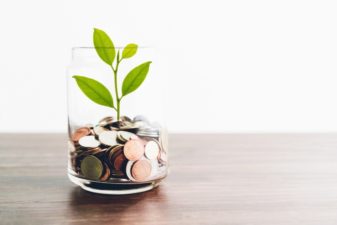There are many ways to gain exposure to real estate. You can do it on your own, buying up properties and managing them, but you’ll probably be limited to a single region of Canada. You can invest in a real estate investment trust focused on one type of Canadian real estate, but again, you’re limited to the whims of the Canadian economy.
Or you can invest in a global real estate company that invests in a vast variety of assets in all geographies. That company is Brookfield Property Partners LP (TSX:BPY.UN)(NYSE:BPY). As the name suggests, it is part of the Brookfield family of spin-offs that is focused entirely on owning and generating returns from real estate. And, like the other Brookfield companies, it does pretty well.
How diverse are the assets? Its portfolio is broken down into three types.
The first is the core office portfolio, which, as of June 2017, is 146 properties accounting for 99 million square feet. These are high-quality assets that have, on average, an eight-year lease term, so cash flow is predictable.
The second is its core retail portfolio, which it has exposure to through a 24% interest in GPP Inc. It has 126 malls and urban retail properties in the United States accounting for 123 million square feet. Despite talks of retail dying, these locations have 95% occupancy.
The final type is known as its opportunistic investments. This includes 30,400 multifamily units, 19 hospitality properties, 338 triple-net-lease assets, 201 self-storage properties, 45 million square feet of industrial space, 11,000 student housing beds, 114 office properties, and 46 retail properties.
So, what is the funds from operation breakdown? In the second quarter, the core office portfolio generated US$162 million, up from US$150 million. Core retail generated US$119 million, up from US$108 million. And the opportunistic portfolio generated US$96 million, down from US$110 million, which Brookfield said was “largest the result of a merchant-build disposition gain of US$21 million in the prior year period.” Essentially, last year looked better because of a one-time event.
But Brookfield is not just a buy-and-hold real estate investor. Brookfield recycles its assets when it feels they are overvalued. It had a goal of recycling between US$1 and US$2 billion of net equity from asset sales. And it’s well on its way. During the second quarter, Brookfield sold 245 Park Avenue in New York, which generated US$700 million. And it sold 20 Canada Square in London, generating US$125 million.
Brookfield then buys new assets the company feels are undervalued. For example, Brookfield bought two multifamily properties in Orange County, California, and Metro, Washington, DC, with a consortium of investors — it paid US$110 million of the total US$168 million. It also invested US$114 million of a total US$437 million in the 1.8-million-square-foot California Market Center, which is mixed use.
Brookfield generates rent, sells assets when they are overvalued, and buys assets when it views them as undervalued. This creates a nice cycling of properties in and out of the portfolio with the goal of boosting returns.
The primary return is dividends. Brookfield currently pays US$0.295 per quarter to its investors. Every year, management has increased the dividend and is projecting future increases on an average annual rate of 5-8%.
So, you get exposure to real estate and strong income returns. If you ask me, that’s the exact type of real estate portfolio you want to have.








